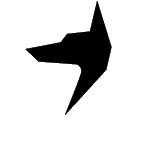Dog collars are an essential tool for pet owners, providing a means of identification and control. However, using a dog collar incorrectly can lead to discomfort or even harm for your furry friend. To ensure the safety and well-being of your dog, it is important to understand the most effective way to use dog collars. In this blog post, we will explore the proper usage of dog collars and provide valuable insights for pet owners.
WHAT IS THE PURPOSE OF A DOG COLLAR?
A dog collar serves multiple purposes, including identification, control, and training. It allows you to attach a leash for walks, display identification tags with your contact information, and can be used as a tool for training and behavior correction.
CHOOSING THE RIGHT COLLAR
When selecting a dog collar, it is crucial to consider your dog's size, breed, and specific needs. There are various types of collars available, such as flat collars, martingale collars, and harnesses. Consult with a professional or veterinarian to determine the most suitable collar for your dog.
PROPER FIT IS ESSENTIAL
Ensuring a proper fit is crucial for your dog's comfort and safety. A collar that is too tight can cause discomfort, difficulty breathing, and even injury. On the other hand, a collar that is too loose may slip off or become caught on objects. To determine the correct fit, you should be able to fit two fingers between the collar and your dog's neck.
REGULARLY CHECK AND ADJUST
It is important to regularly check your dog's collar for any signs of wear or discomfort. Inspect the collar for fraying, damage, or signs of irritation on your dog's skin. Additionally, as your dog grows or gains/loses weight, you may need to adjust the collar accordingly to ensure a proper fit.
USE POSITIVE REINFORCEMENT
When using a dog collar for training purposes, it is essential to employ positive reinforcement techniques. Reward your dog with treats, praise, or playtime when they exhibit desired behaviors. Avoid using the collar as a form of punishment, as this can lead to fear or anxiety in your dog.
SUPERVISE COLLAR USAGE
While dog collars are generally safe when used correctly, it is important to supervise your dog when they are wearing a collar. Remove the collar during unsupervised play or when your dog is in a crate to prevent any potential accidents or injuries.
CONSIDER ALTERNATIVE OPTIONS
In some cases, alternative options such as harnesses or head halters may be more suitable for certain dogs. These alternatives distribute pressure more evenly and can be particularly beneficial for dogs with respiratory issues or neck injuries. Consult with a professional to determine if an alternative option is appropriate for your dog.
By following these guidelines, you can ensure that your dog's collar is used effectively and safely. Remember, the well-being of your furry friend should always be a top priority. If you have any concerns or questions regarding the usage of dog collars, consult with a professional or veterinarian for personalized advice.

